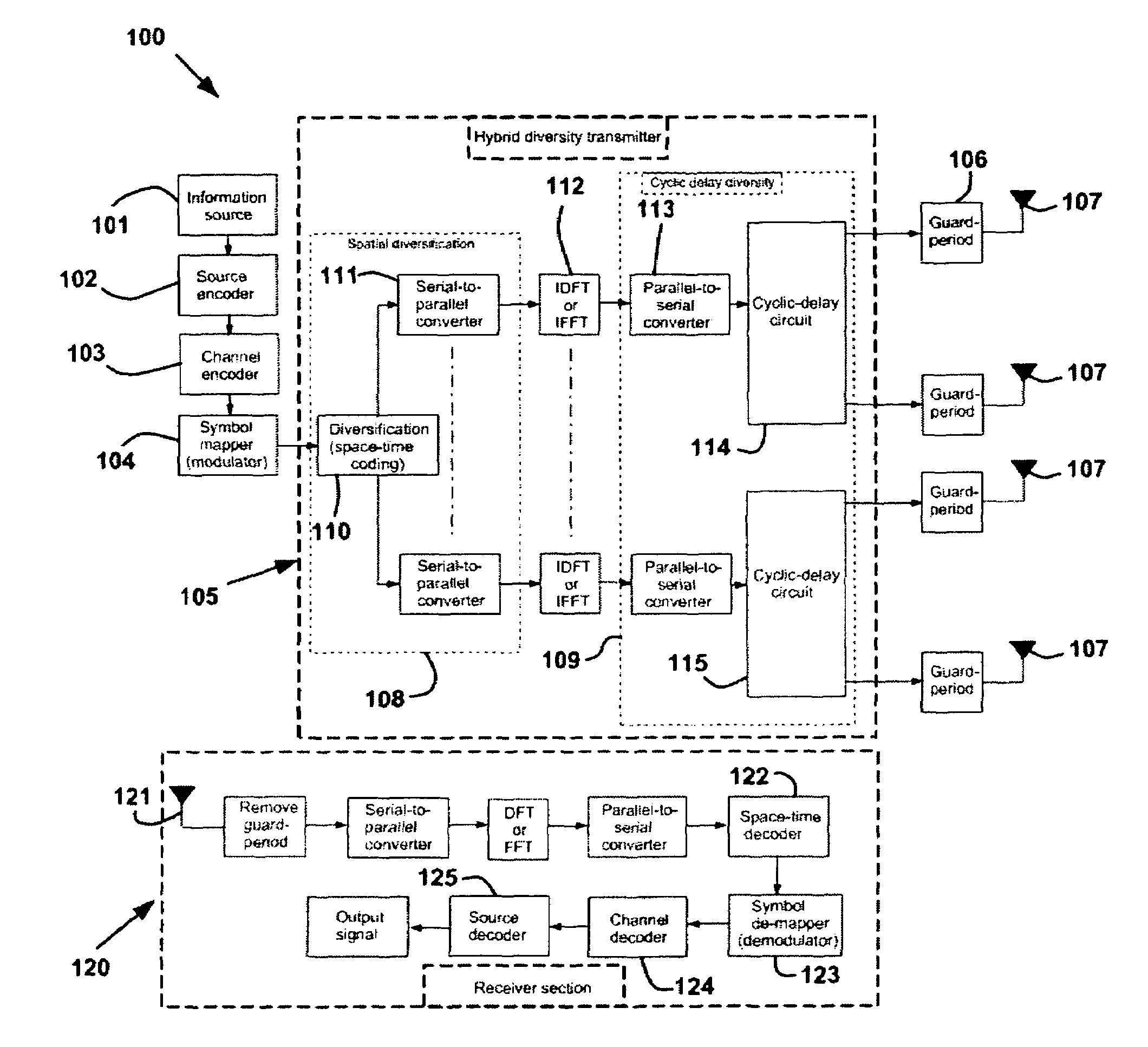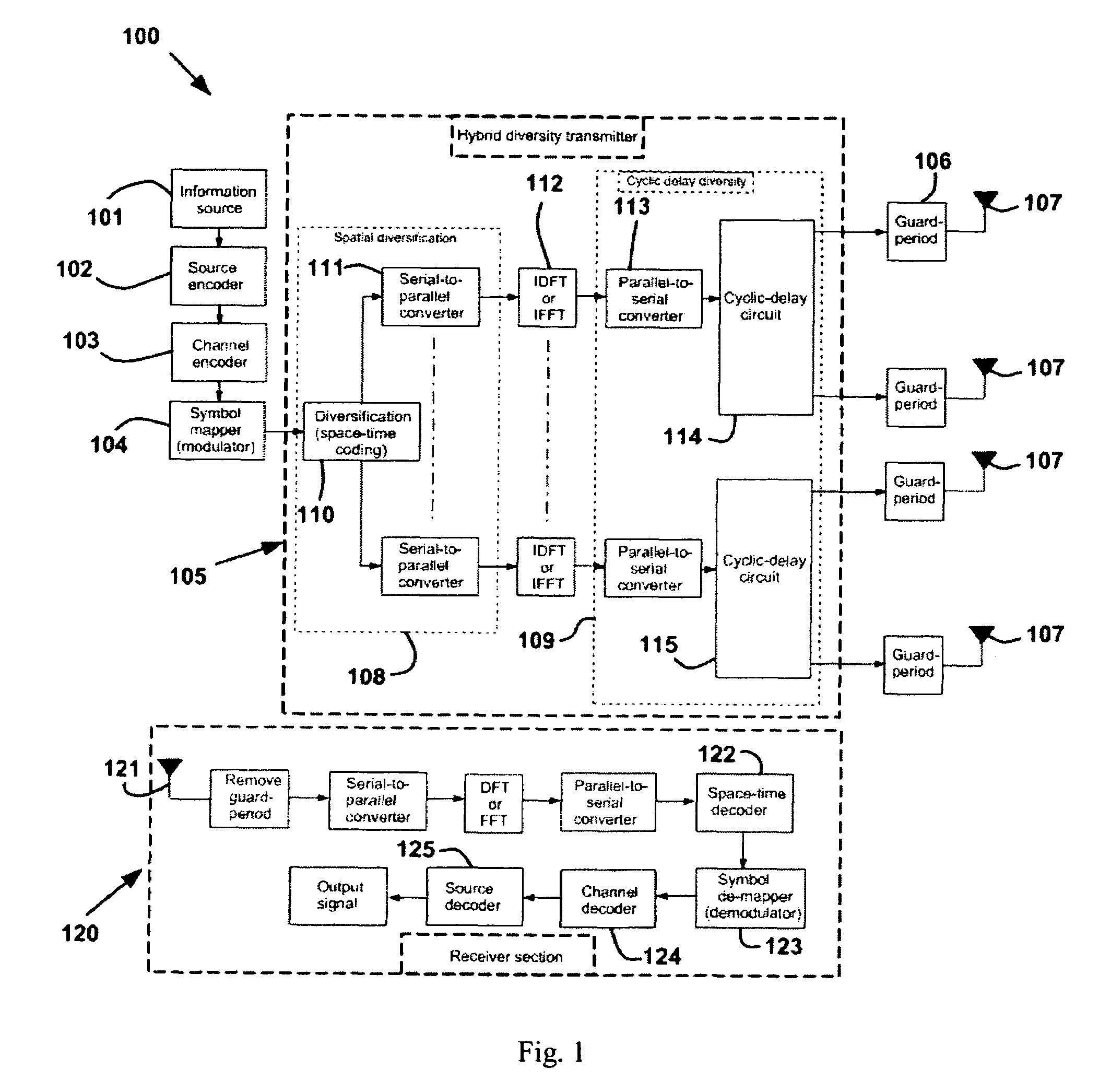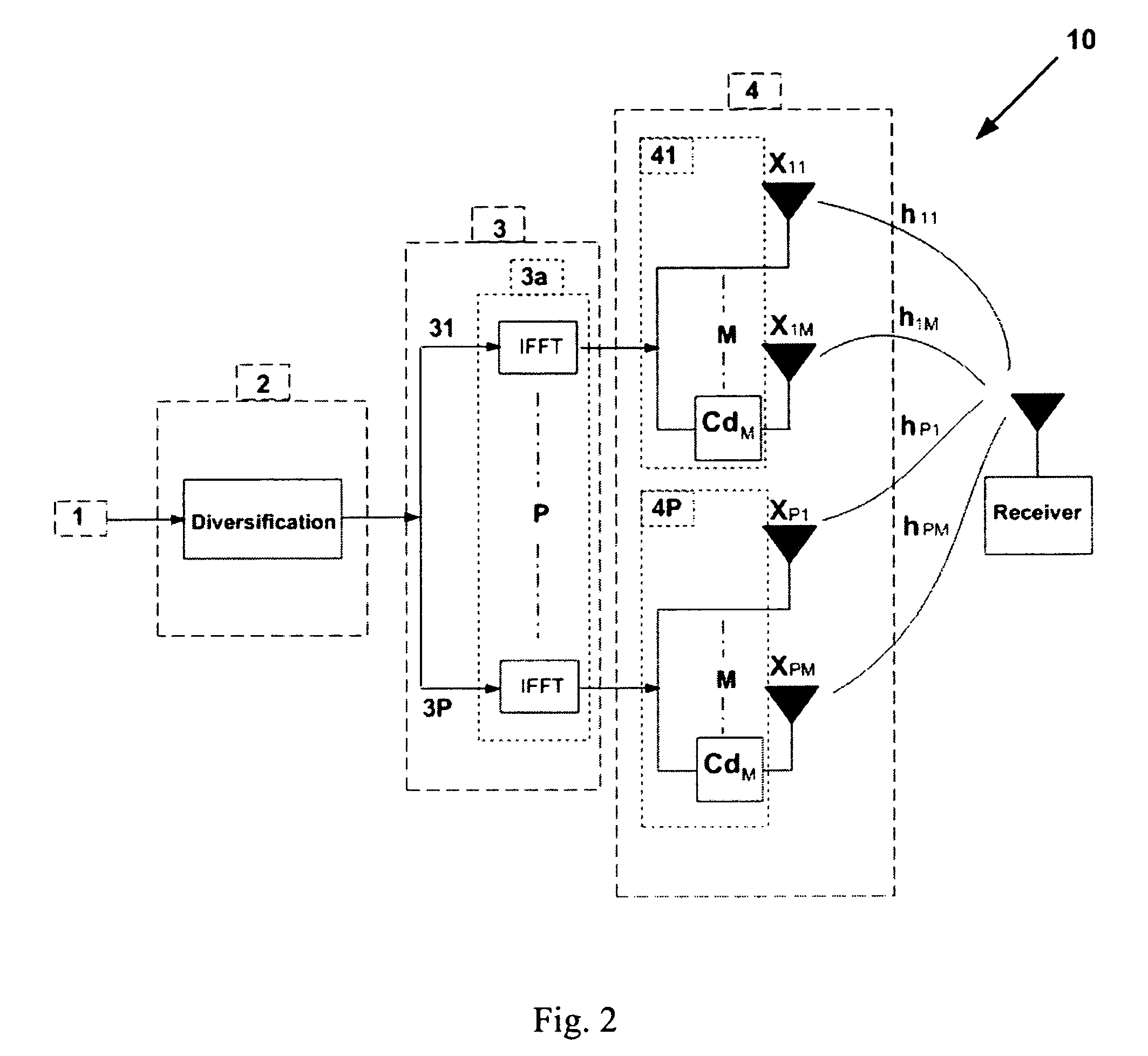Cyclic delay diversity and space coded-hybrid diversity transmitter
a technology of diversity and space code, applied in the field of diversity transmitters, can solve the problems of ineffective random time interleaving with fec or channel coding, inability to realize diversity in one particular system, and inability to achieve diversity in all forms, etc., and achieve the effect of more frequency selectiveness and good spectral efficiency
- Summary
- Abstract
- Description
- Claims
- Application Information
AI Technical Summary
Benefits of technology
Problems solved by technology
Method used
Image
Examples
Embodiment Construction
[0047]Referring to FIG. 1 a functional block diagram generally identified by reference numeral 100 shows the basic elements of an OFDM based wireless digital communication system equipped with a diversity transmitter according to the present invention. An information source 101 provides an output that may be either any analog signal, such as audio or video signal, or any digital signal, such as the output of a compact disc player, that is discrete in time and has a finite number of characters. A source encoder 102 converts the output (or “messages”) from the information source 101 into a sequence of binary digits. Ideally, the information source 101 output is represented by as few binary digits as possible. In other words, an efficient representation of the source output that results in little or no redundancy. The process of efficiently converting the output of either an analog or digital source into a sequence of binary digits is called source encoding or data compression.
[0048]Th...
PUM
 Login to View More
Login to View More Abstract
Description
Claims
Application Information
 Login to View More
Login to View More - R&D
- Intellectual Property
- Life Sciences
- Materials
- Tech Scout
- Unparalleled Data Quality
- Higher Quality Content
- 60% Fewer Hallucinations
Browse by: Latest US Patents, China's latest patents, Technical Efficacy Thesaurus, Application Domain, Technology Topic, Popular Technical Reports.
© 2025 PatSnap. All rights reserved.Legal|Privacy policy|Modern Slavery Act Transparency Statement|Sitemap|About US| Contact US: help@patsnap.com



